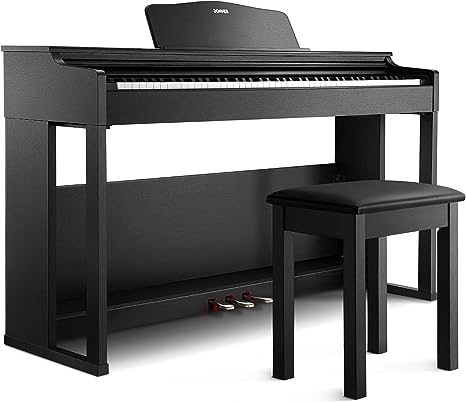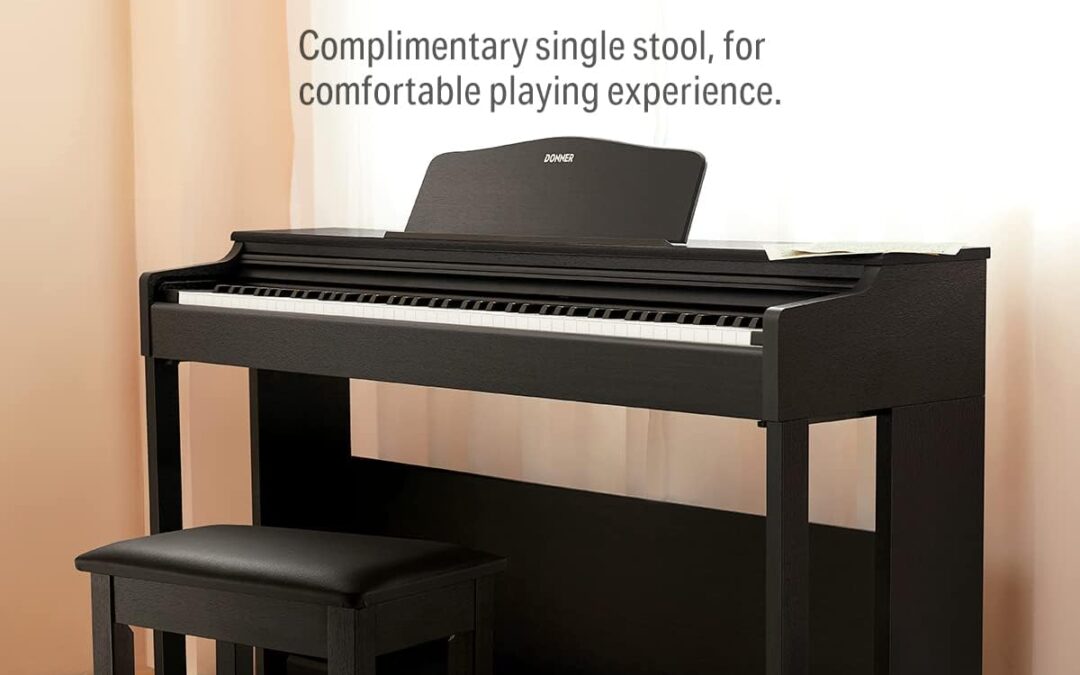Introduction To The Wurlitzer Piano
The Wurlitzer piano is a unique type of keyboard instrument that has become known for its bright, percussive sound and distinctive style. Originally designed and manufactured by the Rudolph Wurlitzer Company in the late 19th century, the piano quickly gained popularity among jazz musicians and in dance halls and theaters for its ability to cut through the sound of a big band.
The Wurlitzer piano is distinct from other pianos due to its unique construction and design. Unlike traditional pianos, which use strings and hammers to produce sound, the Wurlitzer piano uses metal reeds that are struck by hammers, similar to those found in a harmonica. This gives the Wurlitzer a brighter, more percussive sound that can be heard over the sound of a large ensemble.


The Wurlitzer piano also has a distinctive appearance, with a sleek, modern design that was ahead of its time. The instrument is typically smaller than traditional pianos, making it easier to move and transport, and its compact size also allows for a more focused, direct sound.
Over the years, the Wurlitzer piano has been used in a variety of musical genres, from jazz and blues to rock and pop. It has been played by some of the greatest musicians of all time, including Ray Charles, Stevie Wonder, Elton John, and The Beatles. The instrument’s versatility and unique sound have made it a favorite among musicians and music fans alike, and its impact on the world of music cannot be overstated.
In recent years, there has been a renewed interest in the Wurlitzer piano, with musicians and collectors seeking out vintage instruments for their unique sound and style. Whether you are a professional musician or simply a lover of music, the Wurlitzer piano is a fascinating and iconic instrument that is worth exploring.
Wurlitzer Features
The Wurlitzer piano has a number of distinctive features that set it apart from traditional pianos. One of the most notable is its unique sound, which is bright and percussive due to the use of metal reeds struck by hammers rather than strings. This gives the Wurlitzer a distinctively punchy, cutting tone that can be heard over the sound of a large ensemble.
In addition to its unique sound, the Wurlitzer piano is also known for its sleek, modern design. The instrument is typically smaller and more compact than traditional pianos, making it easier to transport and move around. It also has fewer keys than a standard piano, with 64 or 88 keys compared to the standard 88.
Another feature of the Wurlitzer piano is its sustain pedal, which works differently than the sustain pedal on a traditional piano. Rather than holding the notes for a longer period of time, the Wurlitzer’s sustain pedal produces a vibrato effect, creating a shimmering, tremolo-like sound.
Overall, the Wurlitzer piano is a unique and fascinating instrument that offers a distinctive sound and style. Its bright, cutting tone and sleek design make it a favorite among musicians and collectors, and its impact on the world of music cannot be overstated.
Wurlitzer Piano Maintenance
Proper maintenance is essential for ensuring that a Wurlitzer piano performs at its best and lasts for many years. Here are some tips for maintaining a Wurlitzer piano:
- Keep the piano clean: Dust and debris can accumulate on the piano over time, so it’s important to regularly clean the instrument. Use a soft, dry cloth to wipe down the keys and the body of the piano, and avoid using any cleaning products that could damage the finish.
- Tune the piano regularly: Like all pianos, the Wurlitzer needs to be tuned regularly to maintain its proper pitch and tone. It’s recommended to have the piano tuned at least twice a year by a professional piano tuner.
- Protect the piano from humidity: Changes in humidity can affect the tuning and performance of a piano. To prevent damage from humidity, keep the piano in a room with stable temperature and humidity levels, and use a dehumidifier or humidifier if necessary.
- Check the action and hammers: Over time, the action and hammers of a Wurlitzer piano can wear down and require adjustment or replacement. Regularly check the action and hammers for any signs of wear or damage, and have them repaired by a professional if necessary.
- Keep the piano covered: When not in use, cover the piano with a cloth or piano cover to protect it from dust and other debris.
By following these maintenance tips, you can ensure that your Wurlitzer piano remains in top condition and continues to provide beautiful music for years to come.
Piano voicing
Piano voicing refers to the process of adjusting the tone and character of a piano’s sound. Here are some key points about piano voicing:
- Voicing can be used to change the brightness, warmth, and clarity of a piano’s sound.
- The process of voicing involves adjusting the shape and density of the hammers, as well as the tension and position of the piano’s strings.
- Voicing can be used to correct tonal imbalances or inconsistencies in the piano’s sound.
- A skilled piano technician can use voicing techniques to customize the sound of a piano to suit the preferences of the player or the acoustics of a particular room.
- The effects of voicing can vary depending on the type of piano and the specific voicing techniques used.
- Voicing is typically performed by a professional piano technician, who will have the knowledge and tools necessary to adjust the piano’s sound in a precise and controlled manner.
Overall, piano voicing is an important aspect of piano maintenance and can help to improve the quality and consistency of a piano’s sound. Whether you are a professional pianist or a casual player, voicing can be a valuable tool for customizing the sound of your instrument to suit your preferences and playing style.
Conclusion
In conclusion, the Wurlitzer piano is a unique and fascinating instrument that has left an indelible mark on the world of music. With its distinctive sound and sleek design, the Wurlitzer has been used by countless musicians in a variety of genres, from rock and roll to jazz and beyond.
Proper maintenance is essential for keeping a Wurlitzer piano in top condition and ensuring that it continues to provide beautiful music for years to come. Regular tuning, cleaning, and voicing can all help to maintain the piano’s sound and performance. Whether you are a professional pianist, a collector, or simply a lover of music, the Wurlitzer piano is a remarkable instrument that is well worth exploring. Its unique sound, style, and history make it a true icon of the musical world.

